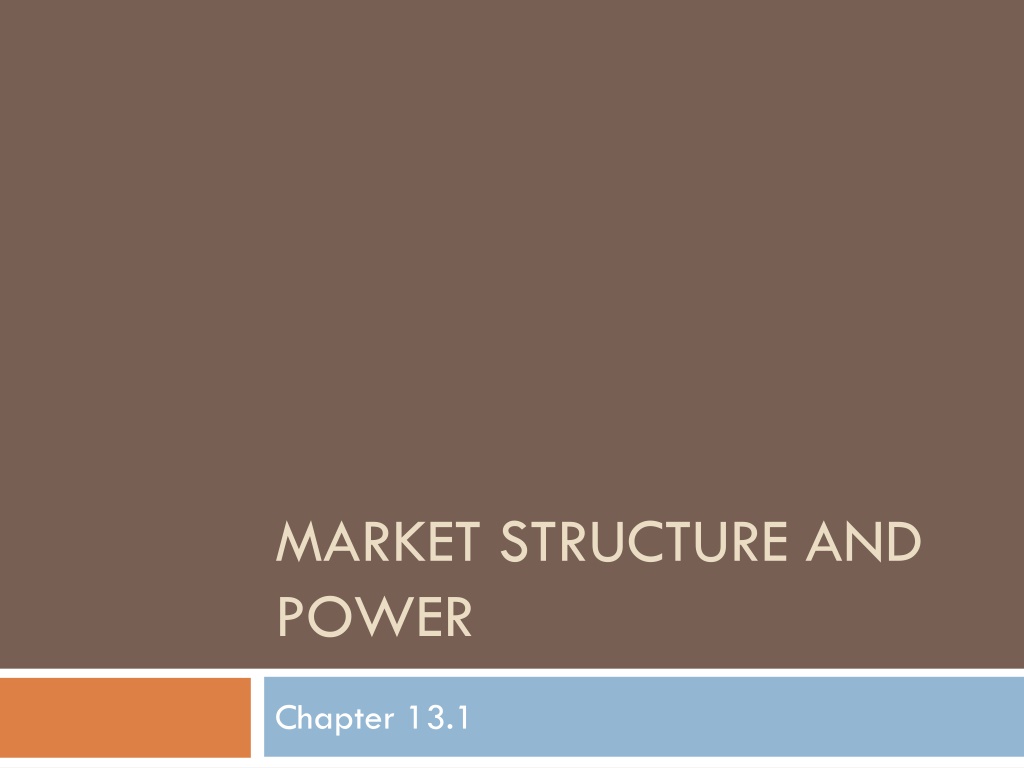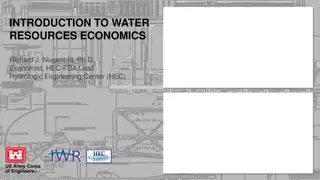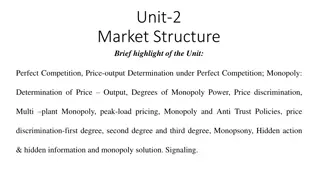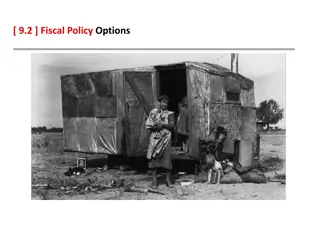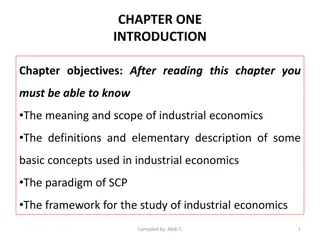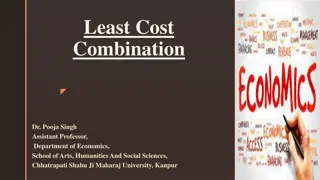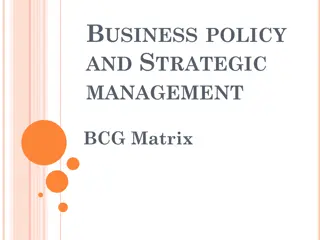Market Structure and Power in Economics
Market structure defines the environment in which firms operate, based on factors like the number and type of buyers and sellers, products offered, barriers to entry, and information symmetry. Market power, on the other hand, refers to a firm's ability to control output and pricing. The relationship between market structure and power influences how firms behave in different market scenarios, ranging from perfect competition to monopoly. Measures like market concentration ratios help assess the level of competitiveness in an industry.
Download Presentation

Please find below an Image/Link to download the presentation.
The content on the website is provided AS IS for your information and personal use only. It may not be sold, licensed, or shared on other websites without obtaining consent from the author.If you encounter any issues during the download, it is possible that the publisher has removed the file from their server.
You are allowed to download the files provided on this website for personal or commercial use, subject to the condition that they are used lawfully. All files are the property of their respective owners.
The content on the website is provided AS IS for your information and personal use only. It may not be sold, licensed, or shared on other websites without obtaining consent from the author.
E N D
Presentation Transcript
MARKET STRUCTURE AND POWER Chapter 13.1
Market Structure Market structure: establishes the overall environment within which each firm operates. Number and size distribution of buyers and sellers Type of product for sale Whether firms in the same industry produce standardized products or differentiated products Differentiated products are less substitutable Barriers to entry These reflect any increased costs that new firms must incur relative to existing firms when entering a particular market High costs deter entry Whether any asymmetry of information exists between buyer and sellers
Market Structure vs Market Power Market structure affects market power Market power refers to the firms ability to restrict output (or quality and thereby raise the price) will dictate to some extent how firms behave
Market Structure vs. Market Power Degree of Market Power 0% ..100% Perfect Competition Competition Many Many Monopolistic Oligopoly Monopoly No. sellers Few One Individual firm mkt. share Type of product Tiny Small Large 100% H D H or D H Barriers to entry Consumer info. None None Substantial Complete Perfect Slight Imperfect Perfect or Imperfect Perfect or Imperfect H=Homogenous D=Differentiated
Measuring Market Concentration Market concentration: reflects the number and size distribution of firms in an industry E.g. perfect competition has a large number of firms with small market shares Want to capture this structure with a statistics Two measures of market concentration Concentration ratio Herfindahl-Hirschman Index
Measuring Market Concentration Concentration ratio % of industry output produced by the largest firms in the industry Industry output measured in terms of sales or volume of output Four-Firm Concentration Ratio (CR4) % of industry output produced by 4 larges firms 60% indicates that the four large firms account for 60 percent of industry output <40% competitive 40-60% monopolistic competition 60+ oligopoly
Measuring Market Concentration Limitations Only considers number and size distribution of firms when determining market structure Does consider barriers to entry Does not consider the distribution of output among the largest firms Firms more likely to be price competitive when similarly sized compared to when one firm dominates the industry and others are much smaller
Measuring Market Concentration Herfindahl-Hirschman Index (HHI) Takes into account the relative size of the largest firms in the concentration ratio 2 1 i i HHi S = N = = + + + 2 2 2 2 N ...... S S S 1 Si is the % of market share or % industry output produced by the ith firm. N is the total number of firms in the industry 0 10,000 (100 ) HHI 2 0 many firms, 10,000 one firm
Measuring Market Concentration Market structure and HHI No specific cut offs that reflect structure of the market using HHI Department of justice has some guidelines concerning when the level of HHI triggers concern about the potential exploitation of market power HHI<1000: reasonably competitive 1000>HHI<1800: mildly concentrated HHI>1800: highly concentrated market
